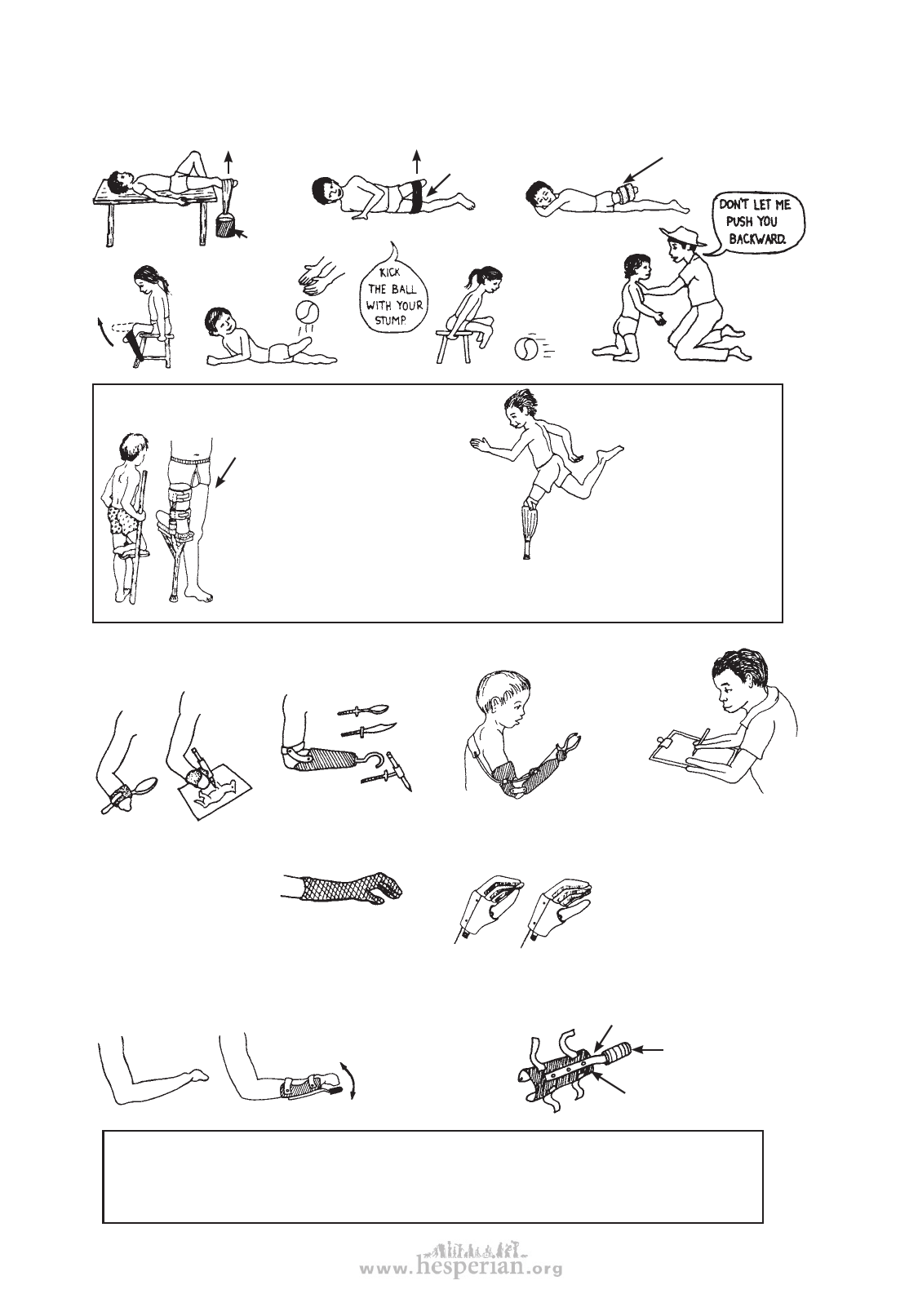
230 chapter 27
STRENGTHENING EXERCISES
Try to strengthen especially those muscles that straighten the joints, and those muscles
needed for walking.
lift
strip of
inner tube
sand bag or
other weight
weight
WARNING about walking aids
Walking aids or artificial limbs,
like these, that keep the stump
bent may be useful until the
child can get a limb that keeps
the joint straight.
However, it is very important
that the child do stretching and
strengthening exercises daily if
he uses a bent-joint aid.
With a well-fitted
stump-in-socket
limb, normal
activity usually
provides all the
stretching and
exercise that are
needed.
Instructions for making simple stump-
in-socket limbs using bamboo and other
local materials are in Chapter 67.
ALTERNATIVES FOR A CHILD WITH AMPUTATED HANDS
simple tool and utensil
holders made of cloth,
leather, or plastic
(See p. 330.)
cuff with
changeable tips
rubber or wood hand, not
for use but for looks
hooks that open and close
to grip (operated by
movements of shoulders
and back)
surgery that turns the
2 bones of the forearm
into pinchers
instead of hooks, an artificial
hand with a thumb that opens
and closes against 2 fingers
(expensive and may not last)
This is a grasping aid for a child whose fingers have been lost but the base of the
hand and wrist joint remain.
Child presses
stump against
post.
metal bar
rubber tube around post
plastic
(heat-fitted, see p. 551)
The type of aid a child and her parents choose for an amputation will depend on several things,
such as availability, cost, usefulness, looks, and local cultural factors. For help in choosing
an appropriate aid, see Chapter 56, “Making Sure Aids and Procedures Do More Good Than
Harm,” especially pages 531 and 532.
Disabled village Children